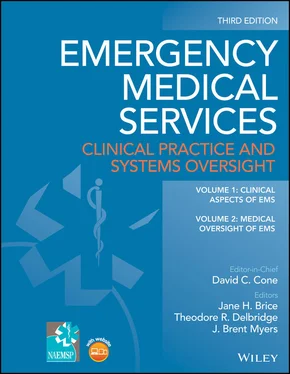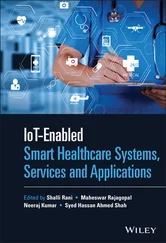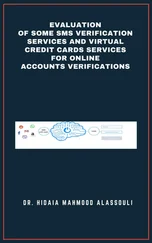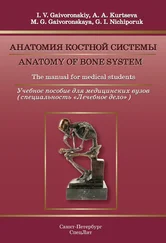Emergency Medical Services
Здесь есть возможность читать онлайн «Emergency Medical Services» — ознакомительный отрывок электронной книги совершенно бесплатно, а после прочтения отрывка купить полную версию. В некоторых случаях можно слушать аудио, скачать через торрент в формате fb2 и присутствует краткое содержание. Жанр: unrecognised, на английском языке. Описание произведения, (предисловие) а так же отзывы посетителей доступны на портале библиотеки ЛибКат.
- Название:Emergency Medical Services
- Автор:
- Жанр:
- Год:неизвестен
- ISBN:нет данных
- Рейтинг книги:5 / 5. Голосов: 1
-
Избранное:Добавить в избранное
- Отзывы:
-
Ваша оценка:
- 100
- 1
- 2
- 3
- 4
- 5
Emergency Medical Services: краткое содержание, описание и аннотация
Предлагаем к чтению аннотацию, описание, краткое содержание или предисловие (зависит от того, что написал сам автор книги «Emergency Medical Services»). Если вы не нашли необходимую информацию о книге — напишите в комментариях, мы постараемся отыскать её.
delivers a thorough foundation upon which to succeed as an EMS medical director and prepare for the NAEMSP National EMS Medical Directors Course and Practicum. Focusing on EMS in the ‘real world’, the book offers specific management tools that will be useful in the reader’s own local EMS system and provides contextual understanding of how EMS functions within the broader emergency care system at a state, local, and national level.
The two volumes offer the core knowledge trainees will need to successfully complete their training and begin their career as EMS physicians, regardless of the EMS systems in use in their areas. A companion website rounds out the book’s offerings with audio and video clips of EMS best practice in action. Readers will also benefit from the inclusion of:
A thorough introduction to the history of EMS An exploration of EMS airway management, including procedures and challenges, as well as how to manage ventilation, oxygenation, and breathing in patients, including cases of respiratory distress Practical discussions of medical problems, including the challenges posed by the undifferentiated patient, altered mental status, cardiac arrest and dysrhythmias, seizures, stroke, and allergic reactions An examination of EMS systems, structure, and leadership
Emergency Medical Services — читать онлайн ознакомительный отрывок
Ниже представлен текст книги, разбитый по страницам. Система сохранения места последней прочитанной страницы, позволяет с удобством читать онлайн бесплатно книгу «Emergency Medical Services», без необходимости каждый раз заново искать на чём Вы остановились. Поставьте закладку, и сможете в любой момент перейти на страницу, на которой закончили чтение.
Интервал:
Закладка:
3 Volume II Title Page Copyright Page Contributors Foreword Preface References About the Companion Site SECTION I: Principles of Oversight and Design CHAPTER 70: Medical oversight of EMS systems Introduction The evolution of the subspecialty of EMS State requirements for EMS medical direction Barriers to effective medical oversight of EMS Indirect medical oversight Direct medical oversight Direct patient care in the field Conclusion Acknowledgment References CHAPTER 71: Principles of EMS system design Introduction System Design Goals Services Vehicles Equipment and Supplies Delivery Settings Provider Organization Considerations Deployment Planning Performance Standards and Assurances Acknowledgments References CHAPTER 72: Emergency care regionalization Regionalization A case example The emergency medical care system Historical background Categorization and designation Federal efforts: Public Law 101‐590 Simultaneous processing Outcomes Diversion and bypass Payer and funding issues Future directions Conclusion References CHAPTER 73: Telemedicine and emerging telecommunications Introduction EMS telemedicine applications Conclusion References CHAPTER 74: Interfacility transportation Introduction Level of care Clinical indications for interfacility transportation Hazards associated with interfacility transportation Medical oversight of interfacility transport Legal considerations in interfacility transportation EMTALA Summary Acknowledgments References CHAPTER 75: Air medical services Introduction Background: History to Current System Design, Growth, and Costs Clinical Efficacy, Appropriateness, and Outcomes Safety, Quality, and Standards Integration and Regulations Regulation Operations Summary References SECTION II: Human Resources CHAPTER 76: EMS personnel Introduction Scope of practice The interdependent relationship between education, certification, licensure, and credentialing Regulating health care professions Summary: the synergy of three layers of public protection Acknowledgments References CHAPTER 77: Protection of EMS personnel from occupationally acquired infections Introduction Standards, laws, and regulations Blood‐borne pathogens Human immunodeficiency virus Airborne, droplet, and contact transmission of infection Recommended immunizations Reporting an exposure Summary Acknowledgment References CHAPTER 78: Medical surveillance of emergency response personnel Regulatory framework Overview Initial employment exam Baseline exam Annual or periodic examination On‐scene medical monitoring Exposure‐specific examination Termination or exit exam Summary References CHAPTER 79: EMS clinician wellness Introduction References CHAPTER 80: Occupational Injury Prevention and Management Introduction Occupational fatalities Occupational injuries Injury prevention Comparing studies References CHAPTER 81: Prevention and intervention for psychologically stressful events Introduction Emergence of occupational behavioral health as a fire and EMS priority Occupational health approach; organizational systems perspective Help seeking predilections vs. help delivery systems Building an integrated system The final fundamental: personal wellness and fitness Summary References CHAPTER 82: EMS practitioner education Introduction Theories of adult learning Language of learning Continuing education in EMS Conclusion References SECTION III: Legal and Legislation CHAPTER 83: Legal issues Introduction The legal framework of the physician/EMT relationship Sources of authority Sources of accountability Areas of liability Liability System concerns Summary Acknowledgments References CHAPTER 84: Legislation, regulation, and ordinance Introduction and brief history The role of legislation, regulation, and ordinance The language and structure of legislation, regulation, and ordinance Authorities established by states and examples of state‐specific language Federal legislation, regulation and policy affecting EMS The future of EMS legislation, regulation, and ordinance Summary Acknowledgment References CHAPTER 85: Due Process Introduction Law in the federal system Due process of law An opportunity to present reasons why the proposed action should not be taken Life, liberty, or property Impartiality of tribunal Notice Time for hearing Standard of proof Right to counsel Summary Acknowledgments References CHAPTER 86: Risk management Introduction Components of prehospital risk management Future directions–prehospital medical error Summary References CHAPTER 87: Politics and advocacy for the EMS physician Introduction Case Studies What is Advocacy? A History of EMS Advocacy Political Action Committees Navigating the Politics of Medical Direction Philosophy, Perspective, and Bias Preparing Yourself Principles of Action Sustaining the Drive Summary Acknowledgment References SECTION IV: Dispatch and Communications CHAPTER 88: Dispatch Introduction Emergency medical dispatch Use of L&S Anatomy of an EMD program Quality improvement Summary References CHAPTER 89: Ambulance safety Introduction Contributing Factors Recommendations Conclusions Acknowledgments References CHAPTER 90: Communications Introduction The context of EMS information communications technology System readiness/access/demand management Field clinician interaction and collaboration with medical direction A further note on telehealth/telemedicine The evolution of current‐day information communication system infrastructure and technical components VHF radio systems Evolving system infrastructure and components Resources for communications planning References SECTION V: Finance and Public Interfaces CHAPTER 91: Principles of finance Managerial accounting Productivity analysis Applying theory to real‐world decisions Conclusion References CHAPTER 92: State EMS Offices Introduction System leadership, organization, regulation, and policy Resource management–financial Resource management–human resources Resource management–transportation Resource management–facility and specialty care regionalization Public access and communications Public information, education, and prevention Clinical care, integration of care, and medical oversight Information, evaluation, and research Large‐scale event preparedness and response Conclusion References CHAPTER 93: EMS–public health interface Introduction Understanding public health Surveillance and databases Cardiac arrest: a public health emergency Mass vaccinations and paramedics Conclusion Acknowledgments References CHAPTER 94: EMS physicians as public spokespersons Introduction Perspectives and Caveats About Public Speaking The Challenges of Bite‐Speak Press Conferences Ten Golden Rules for Public Speakingor Dealing with Media Summary Acknowledgments References SECTION VI: Extraordinary Circumstances CHAPTER 95: Incident command system and National Incident Management System ICS standardization Summary Acknowledgments References CHAPTER 96: Medical management of mass gatherings Introduction Mass gathering types, definitions, and goals Mass gathering risk management Mass gathering event planning and operations Mass gathering personnel needs Mass gathering event training and drills Converting into MCI operations and postevent review Conclusion Acknowledgment References Chapter 97: Disaster preparedness and management Introduction Federal Framework for Disaster Management Catastrophic Events Health and Medical Resources Allocation of Scarce Resources Provider Credentialing Issues References CHAPTER 98: The federal medical response to disasters Introduction Overview of federal medical response to disasters National Response Framework Organization Base document Annexes ESF‐8: Public Health and Medical Services Select response components of ESF‐8 Legal authorities Disclaimer and Acknowledgment References CHAPTER 99: Prehospital triage for mass casualties Introduction Primary Triage Systems Primary Triage Categories SALT Triage START Triage The Evidence Base for Primary Triage Triage Tags Secondary Triage Tertiary Triage Population‐Based Triage Conclusion References CHAPTER 100: Mass casualty management Philosophy Mitigation and preparedness Response Recovery Special considerations Summary References CHAPTER 101: Mass casualty evacuation and patient movement Introduction Estimate Regional transportation Planning Execution Summary References CHAPTER 102: Temporary treatment facilities Introduction Type of event Planning and design of temporary treatment facilities Staff support Other considerations Summary References SECTION VII: Special Hazards CHAPTER 103: Medical support for hazardous materials response Introduction Developing standard operating procedures Identifying potential threats Medical response planning Personal Protective Equipment Accompanying accessories and attachments Responding to hazardous materials Decontamination Chemical removal techniques Medical monitoring of response personnel Conclusion References CHAPTER 5: Chemical properties of hazardous materials Introduction Types of Contamination General categories of hazardous materials Basic properties of hazardous materials General chemical properties of hazardous materials Identifying basic properties of hazardous materials Conclusion References CHAPTER 105: Radiological and nuclear response Radiation: definition and effects Normal radiation environment Radiation threats Types of ionizing radiation What radiation does
Читать дальшеИнтервал:
Закладка:
Похожие книги на «Emergency Medical Services»
Представляем Вашему вниманию похожие книги на «Emergency Medical Services» списком для выбора. Мы отобрали схожую по названию и смыслу литературу в надежде предоставить читателям больше вариантов отыскать новые, интересные, ещё непрочитанные произведения.
Обсуждение, отзывы о книге «Emergency Medical Services» и просто собственные мнения читателей. Оставьте ваши комментарии, напишите, что Вы думаете о произведении, его смысле или главных героях. Укажите что конкретно понравилось, а что нет, и почему Вы так считаете.












